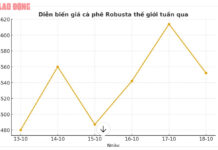“Bonds are a long-term capital mobilization channel for enterprises, but currently, the goal set for 2025 for the outstanding corporate bond balance to reach a minimum of 20% of GDP is challenging. By 2030, it will be very difficult to achieve the target of 25% corporate bond balance.”
This is the view of Prof. Dr. Hoang Van Cuong, Member of the National Assembly’s Finance and Budget Committee and Vice President of the Vietnam Economic Science Association, shared at the workshop “Developing the Corporate Bond Market towards 2030: A Perspective from Credit Ratings” organized by Vietnam Economic Magazine/VnEconomy in collaboration with Moody’s Ratings and VIS Rating.

According to Mr. Cuong, after the explosive growth period of 2018-2021, the bond market crisis occurred in 2022, with the outstanding balance falling from 16% of GDP to around 11% of GDP, and currently, there is no upward trend but is still crawling. Growth is uncertain, and the bond market size is still small.
The bond market is about 11% of GDP, but compared to total capital mobilization, the bond market size is even smaller. Bond capital is about 8% compared to credit, and enterprises are not truly accessing the capital market but are still mobilizing short-term capital through banks.
For Vietnam, corporate bonds play an even more important role as enterprises are entering the production recovery phase. Previously, there were no orders, but now there are. Many enterprises want to expand their production and business but have difficulty accessing bank loans, even though the interest rates are low. When credit is difficult, we must rely on bonds. To issue bonds, there must be trust to reassure customers.

Sharing the same view, Mr. Tran Le Minh, CEO of Vietnam Investment Credit Rating Joint Stock Company (VIS Rating), said that the scale of Vietnam’s bond market is not small. Compared to other countries in the region, Vietnam’s bond market size is about 47 billion USD, higher than that of the Philippines and Indonesia but lower than Malaysia and Thailand.
Looking at the target for 2030, when the outstanding balance of corporate bonds must reach 25% of GDP, Mr. Minh said that it would be very challenging. If Vietnam’s GDP grows at an average rate of 5.5 – 6% for the next 8 years, the scale of the corporate bond market will be about 160-170 billion USD, 3.5 times higher than the current scale. By then, Vietnam’s corporate bond market will be equivalent to that of Malaysia. And, on average, in the next 8 years, Vietnam will have to issue about VND 370 trillion of new bonds annually, equivalent to the results of 2020 – the peak year before the outbreak of problems in the market. “This is truly a challenging goal,” emphasized Mr. Minh.
According to Mr. Minh, there are three necessary conditions to help the Vietnamese bond market develop and achieve the set goals, with the scale of the corporate bond market by 2030 reaching a minimum of 25% of GDP.
First, market information transparency is crucial, as a lack of transparency will hinder market development. This includes providing information on the risk level of the bonds traded in the market, the risk level of the issuing organization, and their ability to repay. This information must be provided by an independent party.
Second, a simple and widely-used reference is needed for investors to know the prevailing market price for the bonds, also known as the yield curve. This helps investors avoid a trial-and-error approach and know the correct price to place their orders.
Third, there is a need to change the investor structure. Currently, individual investors in the Vietnamese market hold a high proportion of corporate bonds. According to VIS Rating’s statistics at the end of last year, individual investors held 33% of the total value of corporate bonds in circulation. In contrast, in more developed markets, corporate bonds with longer maturities are mainly held by institutional investors.
“Note that if conditions 1 and 2 are met, condition 3 will naturally follow. I think that at this point, we are doing very well in laying the groundwork and taking the first steps to address conditions 1 and 2. If we can do this, the bond market will develop in both quality and quantity compared to the previous period,” emphasized the CEO of VIS Rating.





































